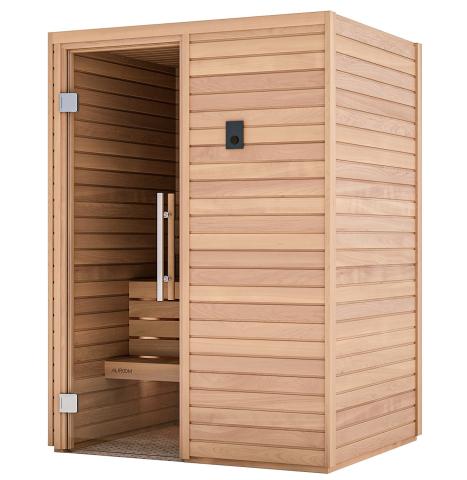Traditional Sauna - Truths
Traditional Sauna - Truths
Blog Article
More About Traditional Sauna
Table of ContentsAn Unbiased View of Traditional SaunaThe Greatest Guide To Traditional SaunaHow Traditional Sauna can Save You Time, Stress, and Money.The Buzz on Traditional Sauna
A lot of the weight lost in a sauna is water loss and is re-gained upon rehydrating. Nevertheless, undoubtedly sauna can be a crucial component of a healthy and balanced weight-loss program. To take a look at the distinctions in between traditional and IR saunas, I will certainly divide these right into verifiable, academic, and fabricated distinctions.Thus, the hottest factor in the saunawhich is at the ceiling directly above the sauna heateris commonly between 185 and 190 F. Traditional Sauna. Claims that a conventional sauna surpasses 200 F is simply not true and not relevant for electrical saunas offered in the US. The temperature for a far-infrared sauna is typically established between 120 and 140 F; however, unlike the typical sauna, the goal in and IR room is not to achieve a high temperature
Due to this, the temperature level difference is almost unimportant, given that extreme sweating leads to both sauna types, yet the method of heating the body is different. In an IR sauna the bather will really feel warm and will certainly sweat a lot, yet at a lot reduced temperatures. Thus, if the objective is to invest longer periods of time in the sauna, the IR sauna is an excellent choice.

What Does Traditional Sauna Mean?
When the high temperature is accomplished, the aspects cycle on and off to keep the high temperature level. A lot of conventional sauna customers enjoy putting water over the rocks to develop vapor to raise sauna humidity degrees. The advantages of pouring water over the rocks consist of: making the area much more comfy, moistening the nasal passages, and allowing the usage of aromatherapy by mixing crucial oils with the water.
In a far-infrared sauna, the heat waves permeate the body to successfully heat up the body and elevate the body core temperature level. To accomplish this increased temperature, Far-infrared emitters develop infrared energy which is close to the exact same wavelength as that which the body normally emitsoften referred to as the "Vital Array" of 7 to 14 microns), so the power is well gotten by the body.
When the power goes into the body, it causes the body temperature level to enhance and eventually causes perspiration. In an infrared sauna it's important for the emitters/heaters to stay on virtually constantly. Because there is no mass of rocks to maintain warm, the sauna will certainly cool down if the emitters turned off.
As discussed above, the sauna bather in an infrared area intends to position himself in front of operating emitters to obtain maximum gain from the heat. The home heating time for both rooms can be extremely various, depending upon exactly how the areas are made use of. For a conventional sauna, a bather must allow 30-40 mins for the space to accomplish a desired temperature and to properly pre-heat the rocks.
The 10-Minute Rule for Traditional Sauna
A well created sauna will generally achieve a temperature of 150-160 F in concerning 30-40 minutes (Traditional Sauna). For hotter temperatures, the area may need to heat for a longer period. When the area achieves set temperature level, the heating system will cycle on and off, generally running regarding 50% of the moment. The shielded walls and the heated rocks will certainly keep the area warm and at stable temperatures.
To some, 15 minutes was "lost" while the infrared energy warmed the wood panels instead than heating up a body, you could check here while others locate a pre-heated room to be more comfy and believe an elevated beginning temperature level is essential to start sweating. The length of advised usage for each space is approximately the very same (10-15 minutes per session); nevertheless, because of the lower air temperatures and the capability to really feel the results of infrared warm quicker than a typical sauna, it is not uncommon for visit the site an individual to invest a total of 20-30 mins in an infrared sauna.
Conventional saunas often tend to be larger (thus make use of even more electrical power) than infrared saunas, although traditional saunas are absolutely available in one and two individual sizes. For a two-person traditional sauna, 5x6 or 5x7 dimension is most popular. The top bench can comfortably seat two or three people and is likewise long enough to relax during the sauna session.


The ordinary price per kWH of electrical energy in the united state is approximately $0.11, so a 4.5 kW heater will certainly cost about $.50 to compete one hour, if the heating system runs constantly for one hour. Generally a sauna heating unit will compete 75% of the initial hour and 50% of succeeding hours on since the elements cycle once the set temperature is achieved.
Getting The Traditional Sauna To Work
A two person far-infrared room is generally physically smaller sized than a standard sauna, typically concerning 4' x 4' or smaller sized. The IR furnace is commonly 1.5-1.7 kW making use of a 120 volt 15 amp plug-in service. our website Given that the room can be made use of faster than a sauna space, we will certainly presume the area is made use of for to of an hour including warm up time.
Finally, there is a seldom discussed difference in the social experience in between the 2 rooms. While our culture has actually lost a few of the social advantage of the typical sauna experience, it can be very socially satisfying. From household time in the sauna, to heart-felt conversations with better halves, to sauna partiesthe traditional sauna experience can bring about intimate socializing.
Many higher end infrared areas consist of tinted light treatment, noise systems and full-glass fronts.
Report this page